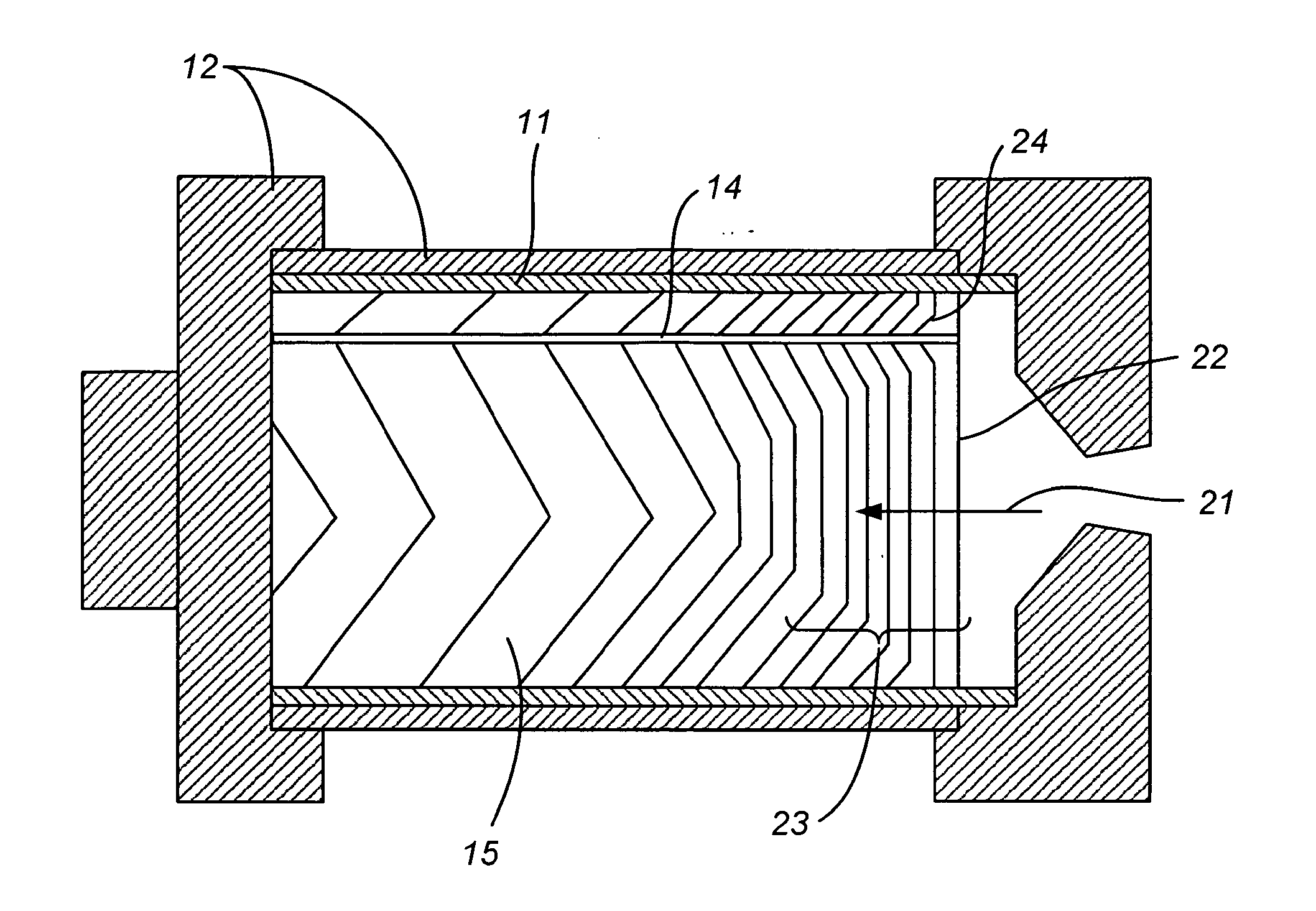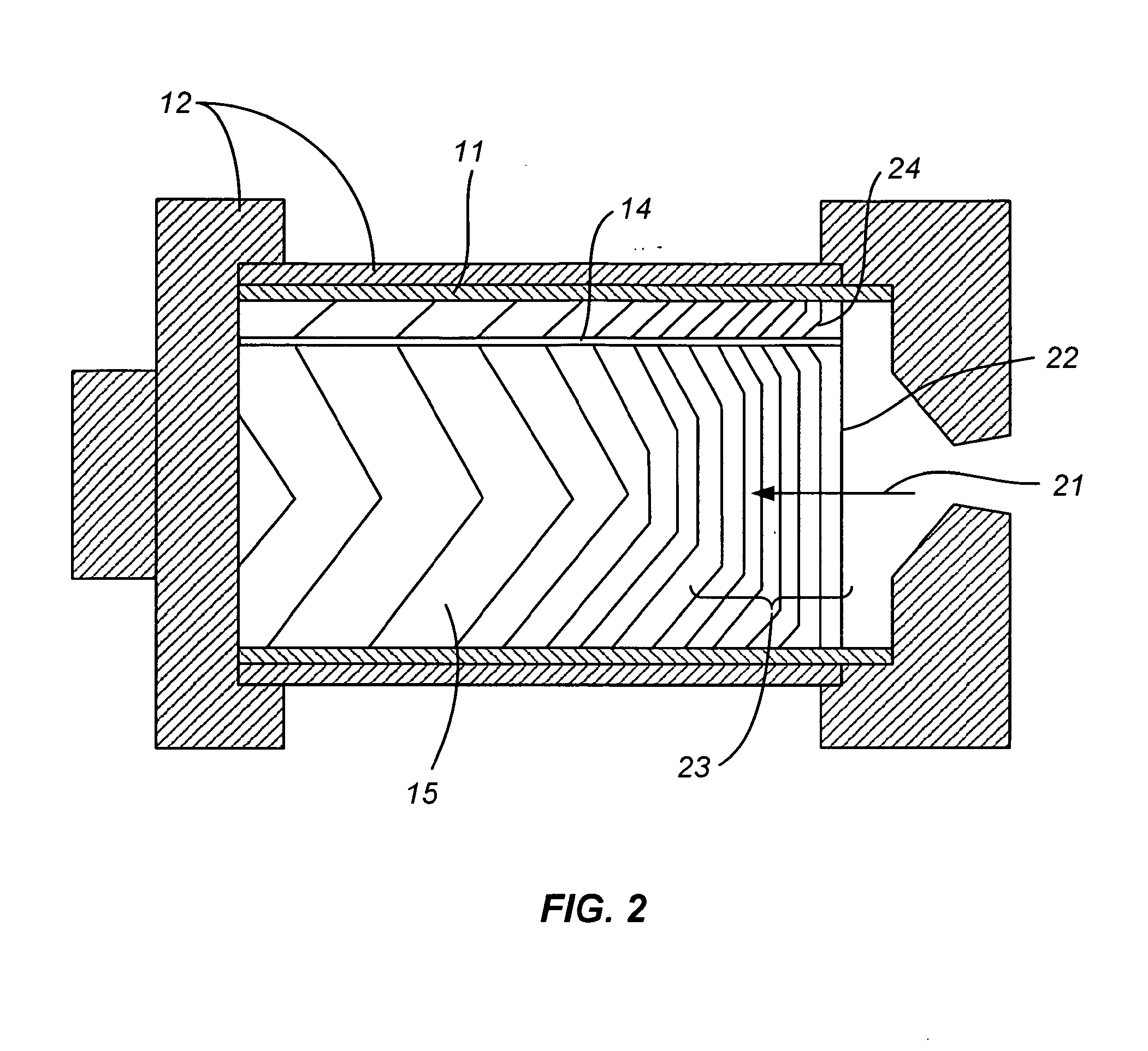End-burning propellant grain with area-enhanced burning surface
- Summary
- Abstract
- Description
- Claims
- Application Information
AI Technical Summary
Benefits of technology
Problems solved by technology
Method used
Image
Examples
Embodiment Construction
[0010]The material of which the sticks are formed, hereinafter referred to as “ballistic control propellant,” and the matrix propellant are solid rocket propellants, including many of the propellants known in the art. The ballistic control propellant and the matrix propellant are distinguishable from each other by their burn rates. Although the specific materials used in any single embodiment of the invention can vary widely, best results will in most cases be obtained when the burn rate of the ballistic control propellant is from about 1.3 times to about ten times the burn rate of the matrix propellant, or from about 1.5 times to about five times, or from about 1.5 times to about three times. Expressed as the burning rates themselves, ballistic control propellants can have, for example, burning rates within the range of about 0.75 in / sec (1.9 cm / sec) to about 5.0 in / sec (12.7 cm / sec) at 2,000 psi, or from about 0.85 in / sec (2.2 cm / sec) to about 3.0 in / sec (7.6 cm / sec) at 2,000 psi,...
PUM
 Login to View More
Login to View More Abstract
Description
Claims
Application Information
 Login to View More
Login to View More - R&D
- Intellectual Property
- Life Sciences
- Materials
- Tech Scout
- Unparalleled Data Quality
- Higher Quality Content
- 60% Fewer Hallucinations
Browse by: Latest US Patents, China's latest patents, Technical Efficacy Thesaurus, Application Domain, Technology Topic, Popular Technical Reports.
© 2025 PatSnap. All rights reserved.Legal|Privacy policy|Modern Slavery Act Transparency Statement|Sitemap|About US| Contact US: help@patsnap.com



